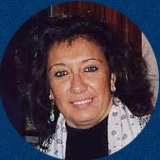|
Amala says of this experience:
"I was working as a psychiatric nurse in a general university hospital in Quebec city, the Centre Hospitalier De L'universite Laval, where I became aware that the primary cause of absence from work for nurses was burnout. So, with a friend who won the second prize of Merrel Dow's by presenting a talk on her experience of burnout, we gave presentations together at a special day for nurses. We even repeated it the day after and, as I was very interested to offer more than a talk, I suggested that the participants write on their evaluation a request to experiment.
"They did, and I started with a ten-weeks' program of 2 hours a week...beginning with Nadabrahma, then Kundalini, then the Prayer Meditation, Nataraj, Vipassana, Gourishankar, Gibberish etc. I did not offer Osho Dynamic then, feeling it was not appropriate given the environment, but I gave participants information about where they could do it in town every Saturday morning.
"They did not have to pay for the program I was offering as I convinced the Nursing Director that a place that creates burnout should also provide the cure for free, at least!
"All nurses were welcome, not only those in psychiatry. A total of 70 people came, in groups of 15-20 at a time, female nurses being in the majority. In the hospital the shortage of space was a real problem and we were often hearing the intercom looking for doctors – a little disturbing. I offered the course outside the hospital setting, charging a minimal fee, and non-nurses joined in. The response was magnificent.
"What were the specific effects? I cannot say participants were less stressed but rather more aware of their stress and willing to look at the source, both inside and out. It was clear to me they were also more open and were able to share more easily their secret worries. They were happy at the possibility of laughing for no reason [in the Laughter Meditation], of cry and laughing together, of being allowed to shake [in the Osho Kundalini meditation]. Many walls between them fell.
"They were mostly happy that they had dared to do this course for themselves. They looked more alive when expressing the importance to them of finally be able to care for themselves.
"I also had more support from my fellow nurses after a few of them took a meditation session. I felt that then they were more able to understand my way and to express their fear of being asked to do the same with the patients. I even discovered that one of the residents [doctors] did Osho Kundalini meditation with a friend for two years. He confessed that to me one day, saying that it had to be kept secret; otherwise his credibility with the psychiatrist in charge could be at risk."
Copyright© Osho Times International
|
|



